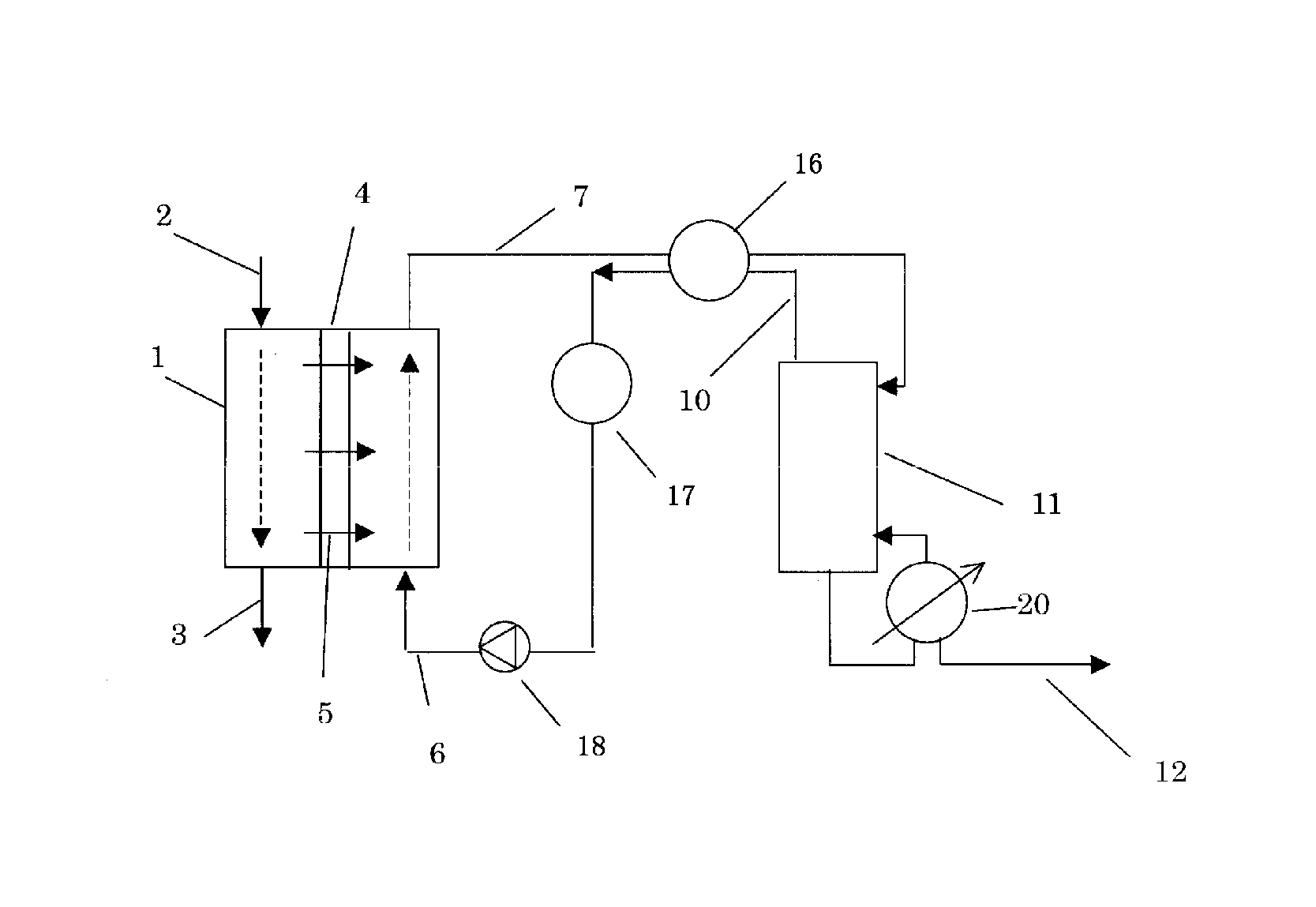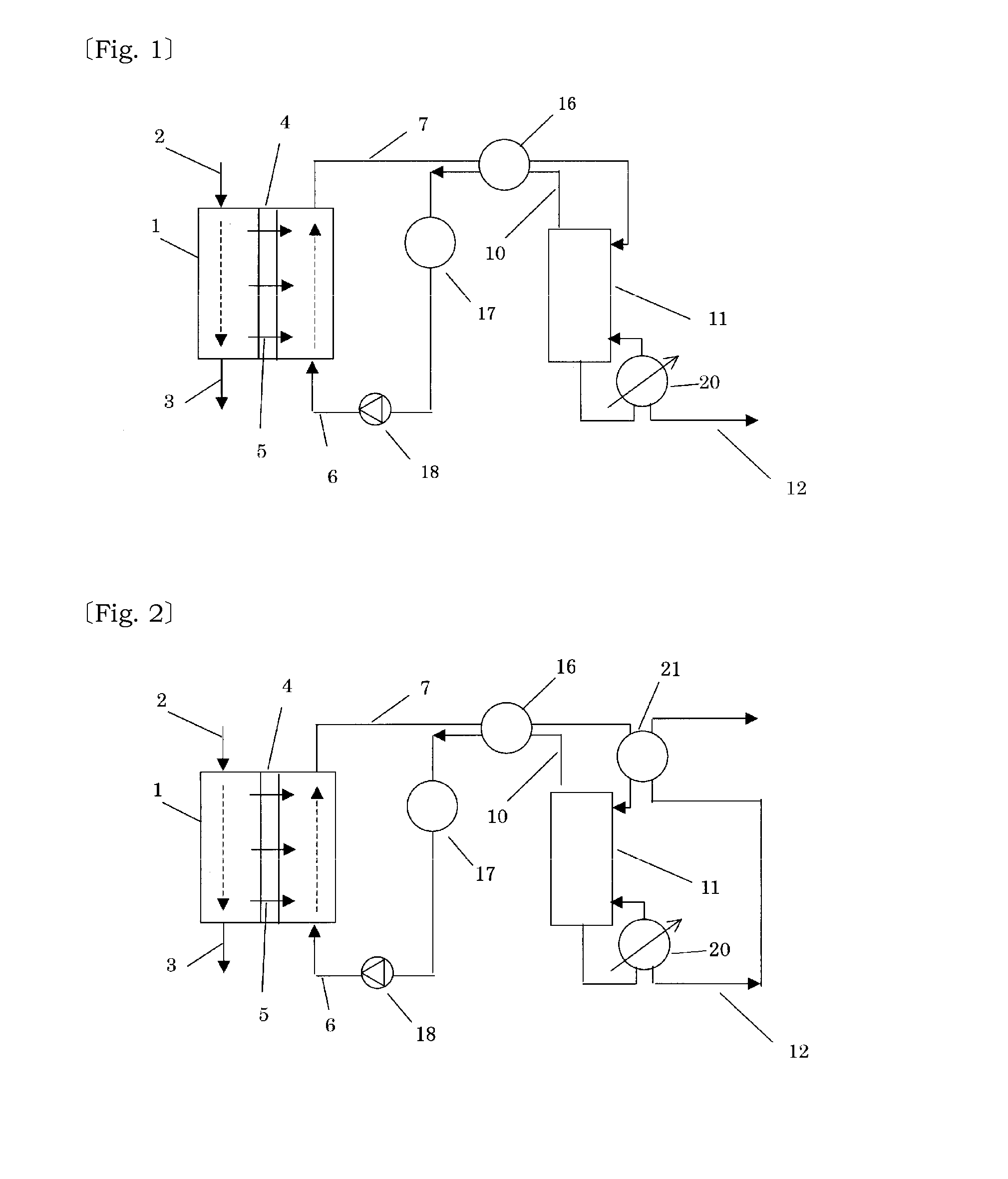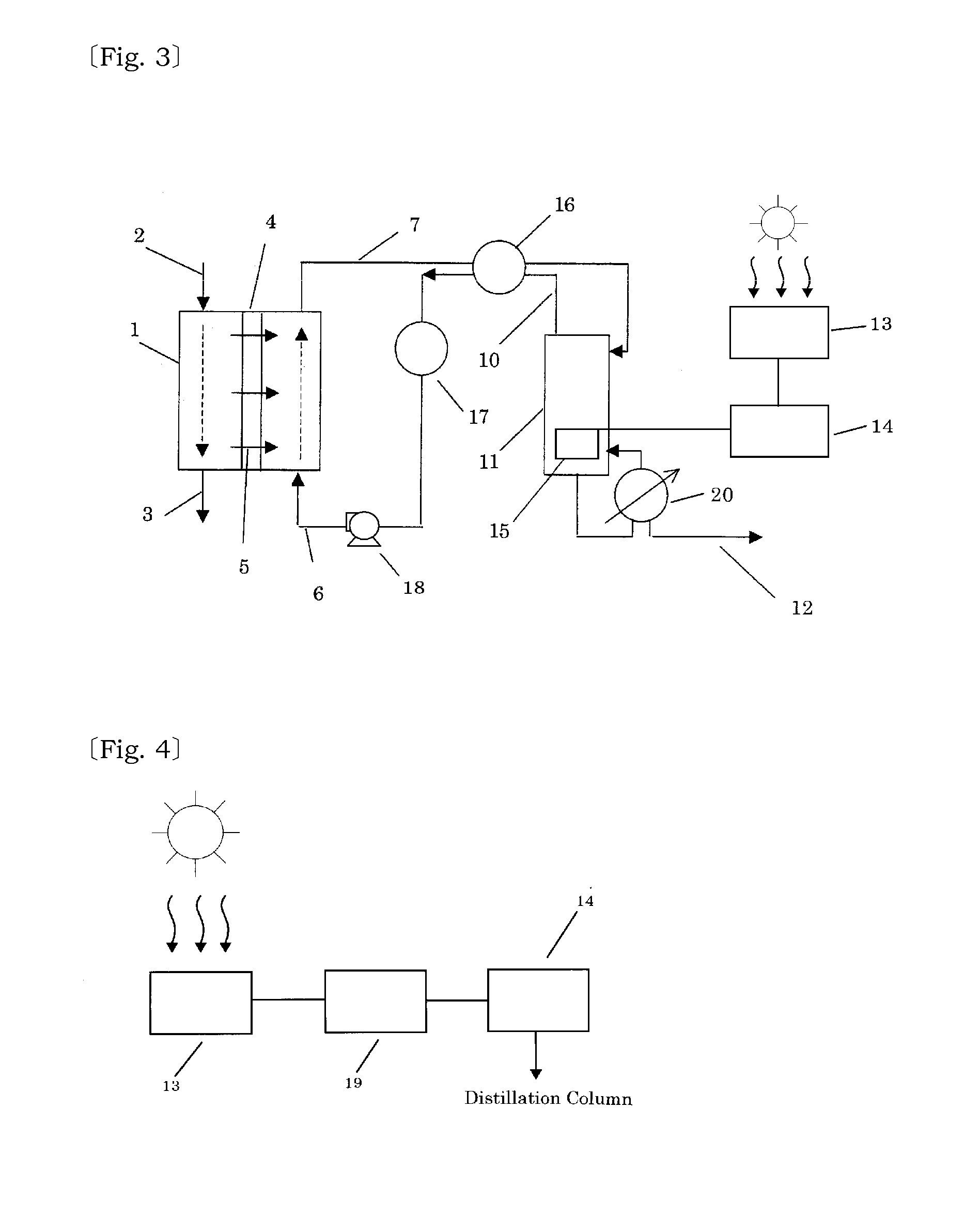Process for manufacturing potable water and apparatus therefor
a manufacturing process and technology for potable water, applied in the nature of treatment water, waste water treatment from quaries, membranes, etc., can solve the problems of environmental pollution, equipment and operation cost, and the method has a cost, so as to save energy necessary for distillation and improve the utilization efficiency of solar energy. , the effect of reducing the cost of equipment and operation
- Summary
- Abstract
- Description
- Claims
- Application Information
AI Technical Summary
Benefits of technology
Problems solved by technology
Method used
Image
Examples
example 1
[0141]The draw solution containing 8.5 mol / L ammonia and 5.6 mol / L carbon dioxide was used. All of the remainder was water, and a molar ratio of ammonia to carbon dioxide is 1.5.
[0142]The inflow rate at the inlet port of the draw solution of the semi-permeable membrane apparatus was set 200 kg / hr. An aqueous sodium chloride solution which simulated seawater was used as the liquid to be treated. The volume of water which passed the separation apparatus which simulated the semi-permeable membrane to migrate into the draw solution was 1,000 kg / hr., and the volume of the dilute draw solution discharged from the outlet port of the draw solution was 1,200 kg / hr., and its temperature was 28° C.
[0143]The dilute draw solution was heated to 38° C. by the heat exchange with the gas discharged from the top of the distillation column, and delivered into the first stage at the upper portion of the distillation column.
[0144]The distillation column was a tray tower type with 30 stages, and a reboil...
example 2
[0148]The draw solution containing 6.9 mol / L ammonia and 3.1 mol / L carbon dioxide was used. All of the remainder was water, and a molar ratio of ammonia to carbon dioxide is 2.2. The inside pressure of the distillation column was 59 kPa A.
[0149]The inflow rate at the inlet port of the draw solution of the separation apparatus which simulated the semi-permeable membrane apparatus was set 0.42 kg / hr. An aqueous sodium chloride solution which simulated seawater was used as the liquid to be treated. The volume of water which passed the separation apparatus which simulated the semi-permeable membrane to migrate into the draw solution was 2.52 kg / hr., and the volume of the dilute draw solution discharged from the outlet port of the draw solution was 2.94 kg / hr., and its temperature was 29° C.
[0150]The dilute draw solution was heated to 59° C. by the heat exchange with the gas discharged from the top of the distillation column, and delivered into the first stage at the upper portion of the...
example 3
[0153]The draw solution containing 6.8 mol / L ammonia and 4.0 mol / L carbon dioxide was used. All of the remainder was water, and a molar ratio of ammonia to carbon dioxide is 1.7. The inside pressure of the distillation column was atmospheric pressure.
[0154]The inflow rate at the inlet port of the draw solution of the separation apparatus which simulated the semi-permeable membrane apparatus was set 250 kg / hr. An aqueous sodium chloride solution which simulated seawater was used as the liquid to be treated. The volume of water which passed the separation apparatus which simulated the semi-permeable membrane to migrate into the draw solution was 1,000 kg / hr., and the volume of the dilute draw solution discharged from the outlet port of the draw solution was 1.25 kg / hr., and its temperature was 40° C.
[0155]The dilute draw solution was heated to 92° C. by the heat exchange with the gas discharged from the top of the distillation column, and delivered into the first stage at the upper po...
PUM
| Property | Measurement | Unit |
|---|---|---|
| pressure | aaaaa | aaaaa |
| temperature | aaaaa | aaaaa |
| concentration | aaaaa | aaaaa |
Abstract
Description
Claims
Application Information
 Login to View More
Login to View More - R&D
- Intellectual Property
- Life Sciences
- Materials
- Tech Scout
- Unparalleled Data Quality
- Higher Quality Content
- 60% Fewer Hallucinations
Browse by: Latest US Patents, China's latest patents, Technical Efficacy Thesaurus, Application Domain, Technology Topic, Popular Technical Reports.
© 2025 PatSnap. All rights reserved.Legal|Privacy policy|Modern Slavery Act Transparency Statement|Sitemap|About US| Contact US: help@patsnap.com



